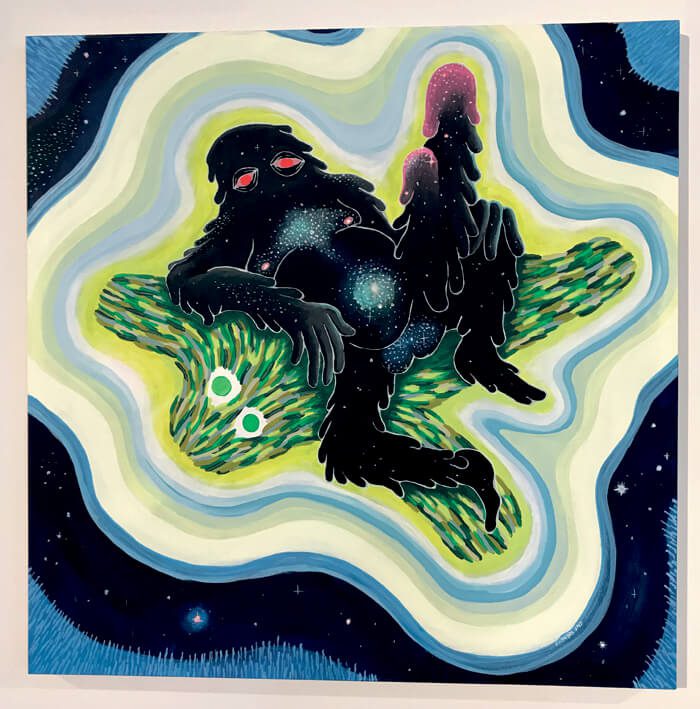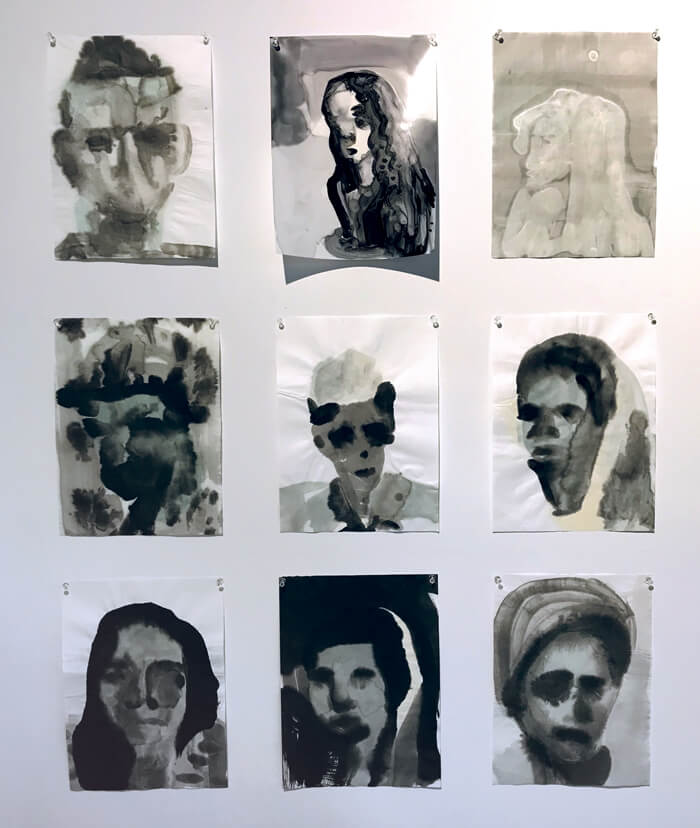
Sanitary Tortilla Factory, Albuquerque
October 6 – November 3
In Lesbian Art in America, Harmony Hammond asks a number of questions about what, precisely, is “lesbian” about lesbian art. “Is the quality ‘lesbian’ embodied in the art object, the sexuality of the artist or viewer, or the viewing context?… Is lesbian art any and all art made by lesbians regardless of subject matter? Or just that which ‘looks’ lesbian? Who decides what looks lesbian?… What about coded imagery, whose content is apparent only to lesbians? Is any art viewed by lesbians or given a lesbian reading automatically lesbianized? Is work by lesbian artists ‘lesbian’ when it deals with non-lesbian issues and concerns?” And so on. For me, these questions hover around any curated show that defines itself as LGBTQIA, including The Alchemical Trace: Transformation and Resilience in Recent Works by LGBTQIA Artists. None of the works in this show contain explicitly queer (if we’re willing to use “queer” as a sort of expedient shorthand for everything contained in LGBTQIA, which for the purposes of this review I am) content or images. That was one of my initial thoughts on walking in, but thinking back to Hammond’s work, I had to check myself. What exactly would constitute explicitly queer content? What is a queer image? To be quite honest, I haven’t a clue.
Yet nearly all of the works in The Alchemical Trace have a quality of queerness, one I can pin down only when I think of the feelings the works evoke in me. When I look at Virgo Paraiso’s Don’t Go Back to Sleep (2000), knowing nothing of its artist, my heart breaks a little. The subject, cast in decidedly religious light, drips with tears from his eyes and blood from his tattooed neck, where his head appears to have been cut off, while purple butterflies perch on his severed skin. It’s an exorbitant, lugubrious sadness, a sadness to relish. And this—the exorbitance? the mix of emotions? butterflies plus blood?—feels queer to me.

The barely inked faces of Maia Cruz Palileo’s series of small paintings There, Where Veiled Ladies Sing Out of Tune (2015), haunted me from across the room the moment I walked in. They are the only female-identified figures in the show, first of all. And they are barely there. This, too, feels queer. In fact, it feels lesbian: even in an exhibition dedicated to queer experience, the lesbians hover at the background, barely there, underrepresented. Meanwhile, the first works that caught my eye were Jason Villego’s Cosmic Slut Reclining on Green Spirit Rug (2017) and his two works on paper that explore similar themes: reclining figures, masturbatory gestures. On first glance, I felt instantly repulsed by these works. I didn’t like them; I didn’t like what they depicted. But as I moved through the show, that initial shock or disgust alchemized into a fondness for their humor and unruliness. Now they are among my favorites. Cosmic Slut is a genderless/all-gendered space monster, and somehow this makes the pleasure easier to share. The transformation from disgust into delight: undoubtedly queer.
The show’s title suggests a more narrative or didactic approach to LGBTQIA experience. I expected to witness instances of resilience and scenes of transformation, but the artists seemed more inclined to challenge the linearity of narrative in their work and offer in its place something less tangible, more fluid. It’s a rare treat to go to a show of contemporary art that puts indefinable emotional experience on view. The works in Alchemical Trace make me feel something, rather than telling me something or trying to make me see something.



